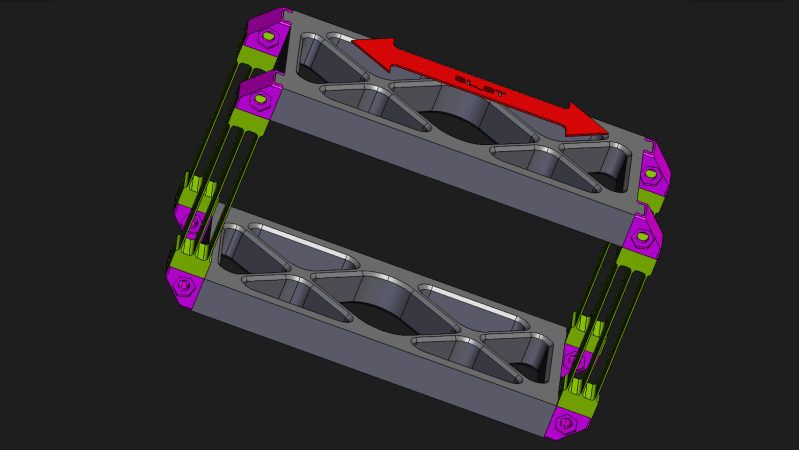Flexures are one of those innocent-looking mechanisms that one finds inside practically any kind of consumer device. Providing constrained movements with small displacements, complete with controlled tension, they can be rather tricky to design. GrabCAD designer [Vyacheslav Popov] hails from Ukraine, and due to the current situation there, plans to sell a collection of flexure building blocks became difficult. In the end, [Vyacheslav] decided to generously release his work open source, for all to enjoy. This collection is quite extensive, looking like it could solve a huge variety of flexure design problems. (Links to the first three sets: Set00, Set01, Set02 but check the author’s collection page for many others)
It’s not just those super-cheap mechanisms in throw-away gadgets that leverage flexures, it’s much more. The Mars rovers use flexure-based suspension, scientific instruments (interferometers and the like) make use of them for small motions where specific axis constraints are needed, and finally, MEMS accelerometers and gyroscopes are based entirely upon them. We’re not even going to try to name examples of flexures in the natural world. They’re everywhere. And, now we’ve got some more design examples to use, so why not flex your flexure muscles and send one to the 3D printer and have a play?
We see flexures here quite a bit, like this nice demonstration of achievable accuracy. Flexures can make some delicious mechanisms, and neat 3D printable input devices.
Thanks to [Addison] for the tip!

















This looks very interesting. It’s unfortunate that it’s not better documented. I will download the files and play with it. This looks like a very useful set of building blocks for developing more complex motion systems using 3D printing!
It’s even more unfortunate that someone is blowing up the country that [Popov] lives in.
+1
+1
Yes, the Russian attack on Ukraine is awful. What does the war in Ukraine have to do with documentation of the project? I realize that he is from Ukraine, and has released the project as open source ‘because war’. Perhaps you know more?
Vyacheslav Popov’s designs are numerous and interesting. I hope he is safe.
I think it’s worth pointing out another resource. Professor Jonathan Hopkins at UCLA has published his entire course videos last year on compliant mechanisms. These are neat, and if you want to expand or create additional pieces or understand how to make a mechanism that translates but doesn’t shift in a perpendicular axis to take a look or other clever things it’s quite the useful thing and accessible to follow. I’ve been using this stuff lately. https://www.youtube.com/@TheFACTsofMechanicalDesign/videos
I upgraded my printer to do nylon because of this and similar flexure needs after fatigue testing a design with a stepper motor things crack easily in most common filaments. PLA and PETG don’t last. Very low fatigue resistance but for low movements and if designed in the right constraints it is workable but nylon and variants are the go to for flex — or steel which has an endurance limit. You also want to ensure the start / stop or “seams” are not at the corners where the thin element attaches, that leads to very early failure.
Wow! Down the rabbit hole we go!
So, Jonathan Hopkins, doesn’t work for Johns Hopkins,
Got it!
Thanks for the link. That is an amazing resource.
Have you tried TPU, I wonder how well that holds up?
The mechanism probably isn’t stiff enough then. I think flexures require pretty stiff material and beams, a hard TPU might be an option but I have already seem a huge variation in the flexibility of 95A TPUs, when they should be the same. Nylon is probably just flexible enough.
Vyacheslav is guys name, Popov is his last name.
Thanks! Changed in the article.
Hi everybody. It’s insanely nice that you found my work interesting and useful. To be honest, I am not an expert in the field of compliant mechanisms. I made sets of models for myself, tested them on printed samples. Just bringing them to an acceptable level of work. There were no specific calculations, everything was on a whim. Unfortunately, I don’t have time for more detailed research. I want to ask one thing, focus your attention on the models, their work and application. Doing them, I try to distract myself from…
nothing threatens me, I’m not in a war zone.
I like the community of printer enthusiasts and hobbyists. Printed designs have incredible potential and I just want to add my contribution.
And for simplicity, call me SL_ST =)